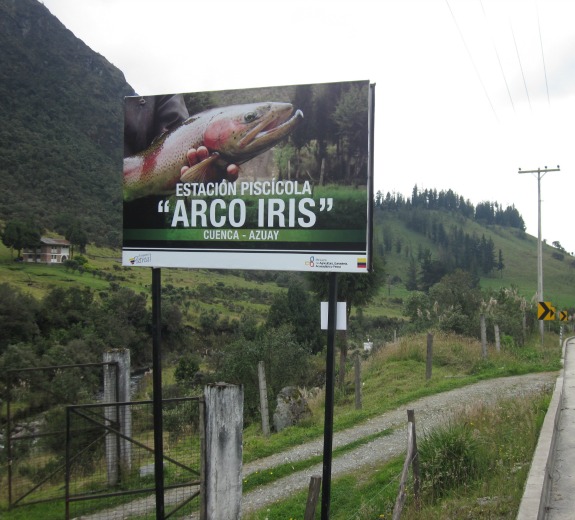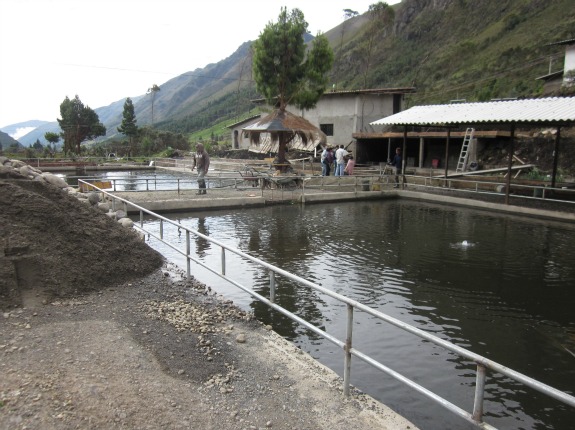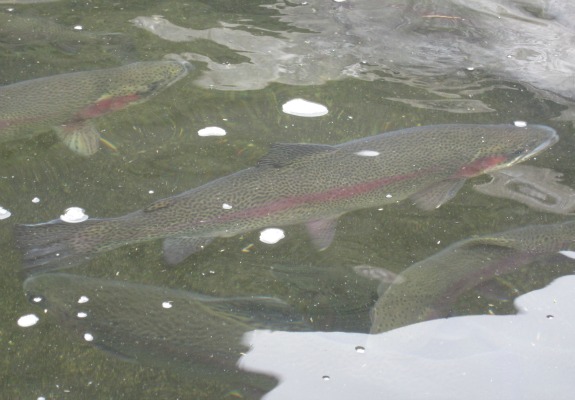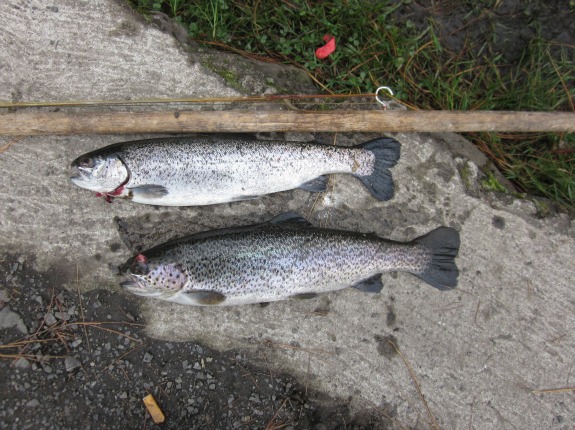 The Riviera 40 was the boatbuilder’s former top seller, but the new 41 is one of the most sophisticated of its type and looks set to reclaim top billing, writes David Lockwood
The Riviera 40 was the boatbuilder’s former top seller, but the new 41 is one of the most sophisticated of its type and looks set to reclaim top billing, writes David Lockwood
Everyone liked the Riviera 40 – a flybridge cruiser that had enough waterline length to be comfortable at sea, ample accommodation and amenities to disappear for a week, and a user-friendly size to drive and maintain. Nearly 300 were sold over six years.
The new 41 has big shoes to fill and, as to be expected, it is more contemporary than the 40. The new model has a naval architect-designed hull courtesy of Frank Mulder, with prop tunnels to reduce shaft angles from 14 degrees to 11 degrees, improving the transfer of power and underwater exhausts. Standard power comes from twin fully electronic, 460hp C7 Caterpillar diesel engines that live in an engine room with fully moulded liner.
There are the latest electronic gizmos, like a neat ($14,224 option) telescopic crane that’s way better than the two-stage davits, a fresh interior with improved finish and seriously big dinette, a cockpit that’s truly mindful of the serious game fisher, and many other refinements.
Engineering improvements
 Riviera has invested considerably in the engineering of the new 41. It begins with the underwater hull, built from hand laid GRP with a balsa-cored foredeck and cabin structure. The hull shape is a modified 40 with bigger chines, prop tunnels, a three-quarter keel in the Riviera style, changed strakes and a squared off transom – all to provide more lift.
Riviera has invested considerably in the engineering of the new 41. It begins with the underwater hull, built from hand laid GRP with a balsa-cored foredeck and cabin structure. The hull shape is a modified 40 with bigger chines, prop tunnels, a three-quarter keel in the Riviera style, changed strakes and a squared off transom – all to provide more lift.
Compared with the 40, the 41 is 8cm shorter in length overall, courtesy of a new bowsprit with integral anchor, but has a 10cm longer moulded hull length which is what matters most. The 41 is also 3cm wider, 150kg heavier due to more gear and a second head, 8cm shallower on the draft thanks to the prop pockets, and carries 210 litres more fuel (or more again if you choose the optional forward tank). There is the same 460 litres of water with room to fit a desalinator.
With its moulded liner, the engine room makes the 41 more refined from an engineering viewpoint. A new, neater and more easily accessible main breaker panel is at the entrance with all the emergency engine-start switches and override switches back aft where you can get to them in a hot engine room. The wiring is simpler and neater, and the engines easier to service. The coolant bottles, Racor fuel filters (including that for the 9.5kW Onan generator, mounted forward), sea strainers and freshwater tap are all back aft.
Part of the reason for more engine room space is the creation of a huge utility room under the galley floor where a wide hatch and short ladder lead down to a huge amount of storage space. You will also find the hot water service here, all the boat’s main plumbing manifolds, the battery charger, inverter (fitted to this boat for generator-free AC for the LCD television), and, should you choose, an optional washer-dryer.
The AC/DC panel on the 41 is more refined with a residual current device, a digital volt gauge, and a lighting and plumbing plan on a ship’s outline that, at a glance, alerts you to what’s running. Way better than the old warning lights above the saloon windscreen (Riv’ owners will know what I mean).
Designs on the outdoors
 While essentially the same size as the 40’s, the cockpit is more mindful of game fishing boats but better protected by the extended flybridge overhang, which, with the seating farther aft, not only ensures a good view of the cockpit but allows for a bigger dinette in the bridge. However, the first thing I noticed when I set foot aboard was the new dot-pattern non-skid (deck) that will be easier to clean than the old moulded pattern.
While essentially the same size as the 40’s, the cockpit is more mindful of game fishing boats but better protected by the extended flybridge overhang, which, with the seating farther aft, not only ensures a good view of the cockpit but allows for a bigger dinette in the bridge. However, the first thing I noticed when I set foot aboard was the new dot-pattern non-skid (deck) that will be easier to clean than the old moulded pattern.
The boarding platform is smarter too, with an integral grab rail so you can hang off the back (also handy for tying off toys) and the swim ladder has a hatch catch allowing you to reverse without it flipping up. The Plastimo hand-held hot/cold deck shower near the marlin door (which seals better than before) is a neat fitting.
Depending on your boating bent, the mid-transom live-bait tank with double hatches is either a fantastic place to keep slimy mackerel or a useful party icebox or bin for the empties. You should also note the hatches are injection moulded on this boat, thereby saving weight, as is the new flybridge hardtop that aims to be half the weight of the old model. Less weight up top is great on any boat.
The moulded steps in the cockpit leading to the sidedecks are less obtrusive and the walkarounds have been widened to improve access to the bow. The Australian-made, 200kg-lift telescopic ADC crane on this boat is a beauty. It has the scope to put a 3.4m Zodiac RIB with 15hp outboard on the foredeck.
Storage space is generous in the cockpit with side lockers, twin long underfloor fish boxes, including macerator pumps, and a tightish lazarette for access to the steering gear but not much else. There is provision for mounting a game chair if that is your thing, plus new toe-under cutouts so you can lean outboard while fighting fish and get support on your thighs rather than stubbing your big toe.
Back under the flybridge overhang is the usual insulated eutectic cool box – this has been extended outboard so you get more internal volume. The sink is on the opposite side to starboard, behind the outward opening saloon door and designed to maximise saloon space. And there is a remote for the Clarion sound system, plus the usual raw and fresh water taps and dockside connections.
Bigger flybridge
The new ladder and aperture improve access to the flybridge with more floor and living space than before. The forward portside lounge can seat two but the L-shaped lounge opposite is a beauty that can accommodate four adults. Add a small fold-up table for cocktail hour – I’m told Riviera might offer such a thing soon – and go for the optional infill that lets you create a double bed in the bridge.
A new angular dash has been designed so you can mount Palm Beach-style split throttle/gear levers either side of the solid Edson wheel, as is often preferred on serious fishing boats. The module also makes better use of space with plenty of room for flush mounting two 15” electronic screens (one Raymarine C120 and ST6002 autopilot are fitted to this boat).
Indoor living
Things have changed dramatically indoors with contemporary saloon lounges that are lower and squarer than the old curved ones with ruched or pleated infills; a much bigger, raised and dedicated dinette to starboard; lovely high-gloss natural cherrywood joinery, thanks to the new varnishing plant; and a more modern, light and spacious look from cream liners.
The small hard-wearing Amtico floor panel as you step inside the saloon is a good thing to cut down on wear. The saloon door opens outwards so it doesn’t get in the way of the wetbar with combo fridge/icemaker, usefully big servery, bottle locker and drawers, plus the AC/DC panel with generator control.
The L-shaped lounge opposite, finished in cream or bone-coloured leather, can seat four or be used by two as a day lounge or bed. Better still is the optional trundle bed that boosts your sleeping capacity by two. And when it’s raining or mid-winter, that trundle bed makes a great place from which to watch videos. Meanwhile, in the ceiling liner is a pushbutton rod locker so you can carry all your fishing gear aboard without hearing “get those rods off the bed!” – another nice detail.
The windows are deeper, letting in more light, and the huge aft window is actually the same size as that on a 56. There are new blinds and an LCD television stand before the dinette to port. Located on a raised section of Amtico flooring that won’t stain, the dinette is huge and able to comfortably seat four for a real sit-down dinner with great views. The table is on a gas pedestal, so even big blokes will fit under it, and there is the option of an infill to create a daybed or second kiddie’s bed.
The galley opposite is still on a mezzanine level, but it’s only one step instead of two from the saloon allowing better discourse between chef and crew. It also features a massive amount of Corian food-preparation space. Amenities range from a recessed two-burner Ceran hob which will let you cook in pots without worrying about spills, to a convection microwave oven, deep sink with separate filtered drinking-water tap, to a quieter extractor fan and a NovaCool bench-height fridge with separate vertical freezer.
Accommodation
It’s a treat getting two cabins and two heads on a 41-footer – the layout is ideal for living aboard with family and/or friends. I’m not sure how many you want to sleep on your Riviera 41, but with a bed in the bridge, trundle bed in the saloon and infill for the dinette all optional, and the standard accommodation layout as tested, you could sleep 11.
Great to see a fixed or optional opening portlight (for which I would want a reed switch and light on the dash letting me know the port’s been left open) in the standard guests’ cabin. At the time of writing the cabin had two single beds and a transverse pullout overhead berth. At least one Sydney dealer said he would prefer to see just two single berths and no overhead bed, plus an infill to make a double, thereby creating more headroom around the beds.
The communal head/guest’s en suite has a new and improved floor with gutters to maximise drainage, a classy semi-recessed porcelain basin, stylish bathroom fittings and Vacuflush loo. Extractor fans and opening hatches assist with ventilation too. There is a lot more floor space in the owner’s en suite to port, which features a lovely separate shower stall.
The stateroom in the bow has the trademark Riviera Island double bed with innerspring mattress. The new bed has squared off corners making it a tad smaller but easier to get aboard. Storage in the stateroom was in side lockers, a hanging locker and wardrobe, plus drawers and a big space below the lift-up bed.
As ever, there were classy bedding packages using neutral and natural hues, nice man-made suede liners and sophisticated fabrics. The blue LED lights are special at night and, from what I could tell, noise levels inside appear to be reduced when running and, I’m guessing, with the generator going too. Not that these are noisy boats.
Offshore test
The C7 Caterpillar engines have an eagerness, responsiveness and a real throatiness that is music to the ears. Top speed (WOT – 2800rpm) was 29.5 to 30kts depending on tide and wind. So consider this a 30-knot boat or, if you’re like me, a 28-knotter by the time you put a shed full of gear aboard.
Cruising figures at 2200rpm are 19.5 to 20kts for 100ltr/hr on both engines, giving a safe range of 360 nautical miles, with 10 per cent of the fuel supply in reserve. Optimum cruise is around 2450rpm and 23.5 knots for 120lt/hr and a range of about 350-plus nautical miles. At 2600rpm the Riviera 41 was doing 26kts with the Cats consuming 135 litres for a 340 nautical-mile range. So, fast or slow, there’s not that much in it. I’d go fast!
Offshore the boat did, as intended, run flatter and it seemed really nice and smooth with no thumping in the abating conditions. The hull pushes a fair bit of water off its bow, perhaps running a degree too flat, but more fuel will right that (it had just a quarter of a tank of fuel). The spray also tended to stay outboard and not end up on the clears. By the end I came away impressed by the ride.
Looking back, the 40 was Riviera’s biggest-selling boat but that spot is now filled by the more-than-a-million-dollar Riviera 47. But, with the advancements in engines, electronics and ergonomics, the 41 could just regain the top spot.
Specifications Riviera 41 Flybridge Convertible (Platinum)
Construction: GRP hull, cored decks and hardtop
LOA: 14.03m
Beam: 4.57m
Draft: 1.13m
Weight: 13,650kg dry w/std motors
Fuel: 2000lt
Water: 460lt
Holding tank: 150lt
Engines 2 x six-cylinder Caterpillar C7 (fuel injected, turbocharged and aftercooled)
Rated HP: 460 @ 2800rpm
Gearboxes: Twin Disc 1.75:1
Props: Four-blade bronze
Price as Tested $973,414 w/ twin C7 Caterpillar diesel motors and options
Priced From $861,479 w/ twin Caterpillar C7 460hp diesel engines




